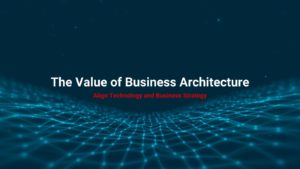Any successful digital transformation must start with the end in mind and describe what victory would look like. In this modern era, simply stated, the Future Vision for any business leadership team should be an agile business model that can continuously innovate at speed and scale. Most businesses can look forward 3-5 years and say what they THINK AND KNOW AT THIS POINT IN TIME regarding what they want to do, what they want to be, and what they want to accomplish in that future timeframe. However, all businesses must be ready to:
- Learn and change
- Respond to a new idea or threat
- Acquire, be acquired and merge and integrate companies
- Plan for unexpected opportunities and/or disruptions
- Take on digital native/digital business/upstarts
The businesses that succeed in this digital era will be those that can sense, learn and respond, and who can innovate at speed and scale. That’s what victory should look like for any digital transformation.
Major Outcomes to Expect From a Multi-Year Transformation Journey
Let’s dive deeper into what a Future Vision picture of victory should look like for an agile business model that is built for the modern era. There are generally THREE BIG OUTCOMES you should expect from this multi-year journey and investment in transformation.
- Business Outcomes – This outcome is traditionally the focus for most companies. Most strategies and transformation plans, and even investment or spending requests, often make statements like: “If we make this investment, it should increase revenue, reduce costs, improve customer service, gain wallet share, etc.” We’re actually pretty good at building a plan and a business case that ties investment in technology projects to business outcomes and metrics. Additionally, most IT departments in big, legacy industry incumbents can eventually build systems that provide the necessary capabilities to support the business outcomes that can be clearly defined at any given point in time. This is the most obvious and the most commonly pursued/achieved of the three big outcomes.
- Architectural Outcomes – This outcome is about the critical value of building the business solutions described above on a modern architecture that is capability-based, data-centric and layered in a way that enables change – or innovation and integration at speed and scale. This is a tough one for business teams to grasp, because building a technical architecture that is durable and lasts seems like an oxymoron given the fact that technology will constantly change at the speed of Moore’s Law and innovation in technology. Yet, this is precisely the point – the only architecture that can be “built to last” must be “built for change.” Therefore, the layering (infrastructure),externalizing (business rules, etc.) and loosely coupling all components, devices and software (API’s) will allow for continuous evolution.
- Organizational Outcomes – This outcome is about building the organizational capabilities that are required to achieve the other two outcomes on a consistent, efficient and effective basis over time and across waves of change. This requires the following:
- Recruiting and reskilling your workforce to learn modern ways
- Building a culture that loves change and innovation
- Implementing an IT Operating Model that is “maniacal” about removing bureaucracy and obstacles, while maintaining control and quality
- Assembling, developing and empowering a great leadership team
I can attest that all three outcomes are critical to future success. However, you must guard against achieving business outcomes by adding more rigidity and technical debt (sacrificing Architectural Outcomes) and more people and money (sacrificing Organizational Outcomes). In fact, Architectural and Organizational Outcomes are actually the more durable outcomes if victory is truly defined as creating an agile business model that can continuously evolve to compete in the 21st century. When you are successful in building the right organization that can transform a legacy systems landscape into a modern, layered architecture, then achieving business outcomes at speed and scale in an agile business will come naturally.
These assets, both technical and human capital, are at the core of success for the most innovative companies. Apple didn’t conceive of Apple TV or Apple Pay when they built the iTunes architecture. Nor did Amazon conceive of acquiring Whole Foods when they built the Amazon architecture. They are built for change and have an agile workforce that lives to innovate and an architecture that enables IT at speed and scale. To us at The Feld Group Institute, “Digital Transformation” (a widely used buzz phrase these days) means achieving ALL THREE OF THESE BIG OUTCOMES to enable an agile business model built for change.
Author: Charlie Feld, Founder, The Feld Group Institute
Connect with Charlie Feld on LinkedIn ![]()




